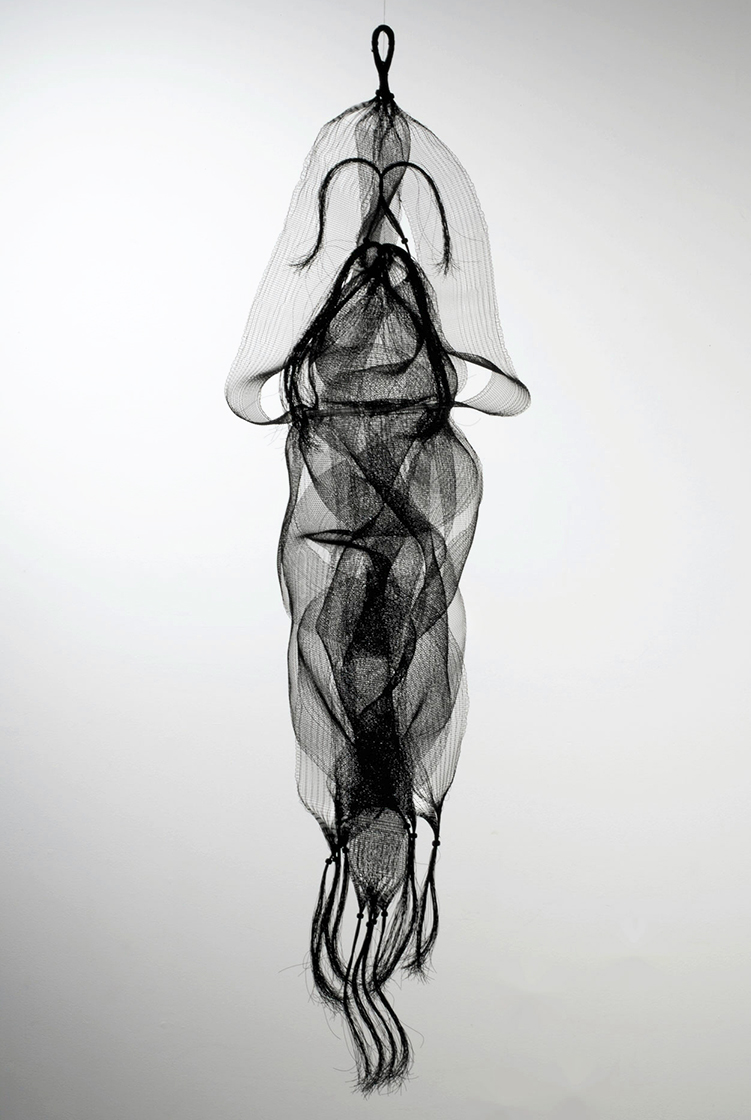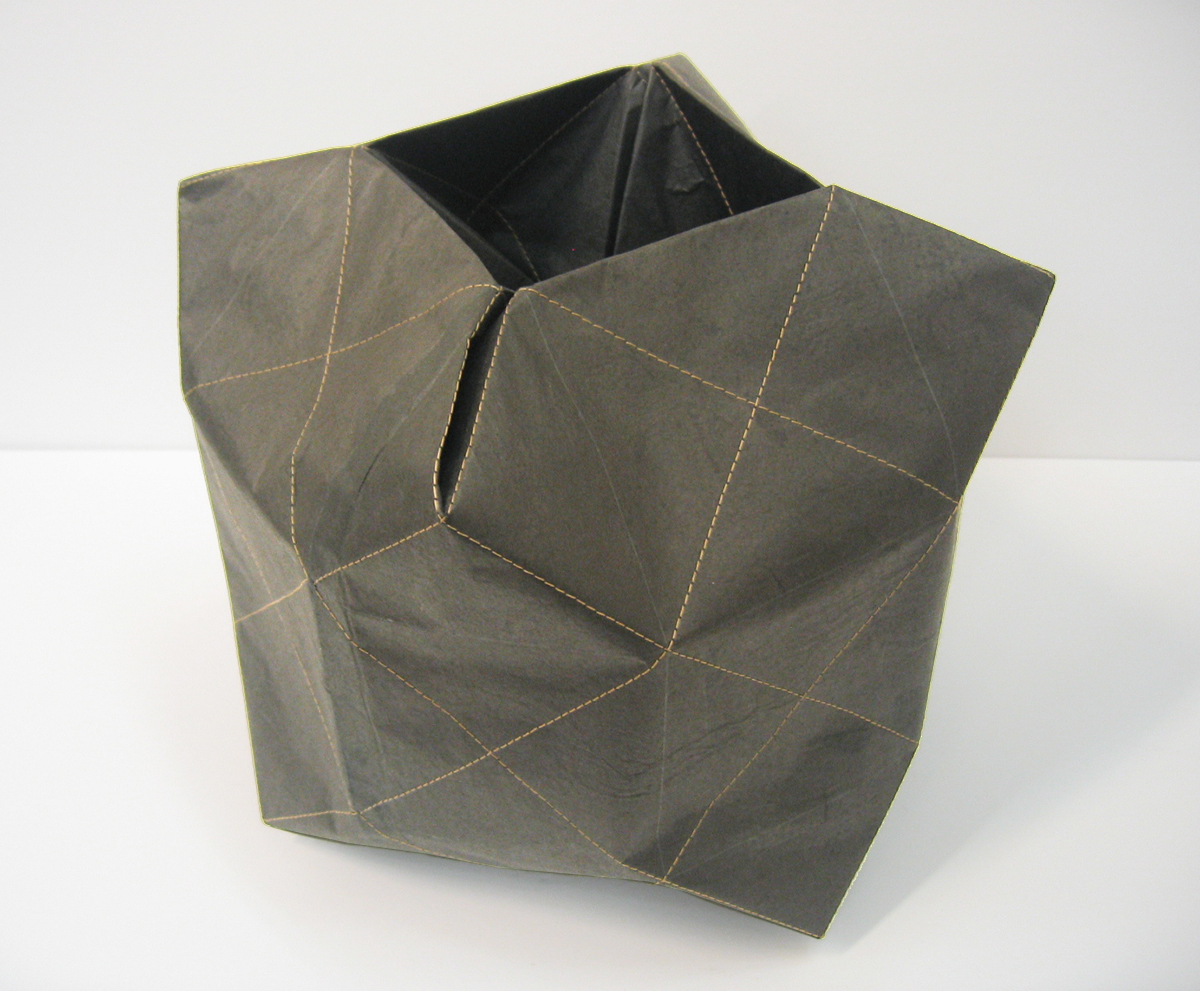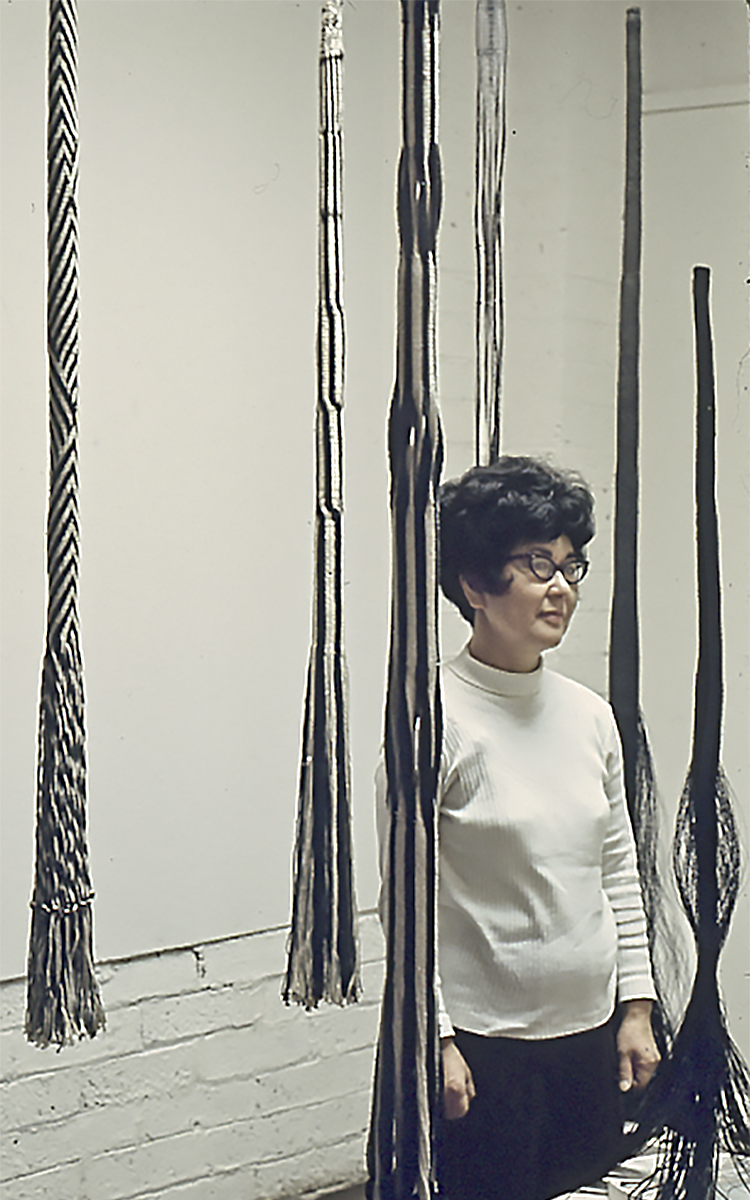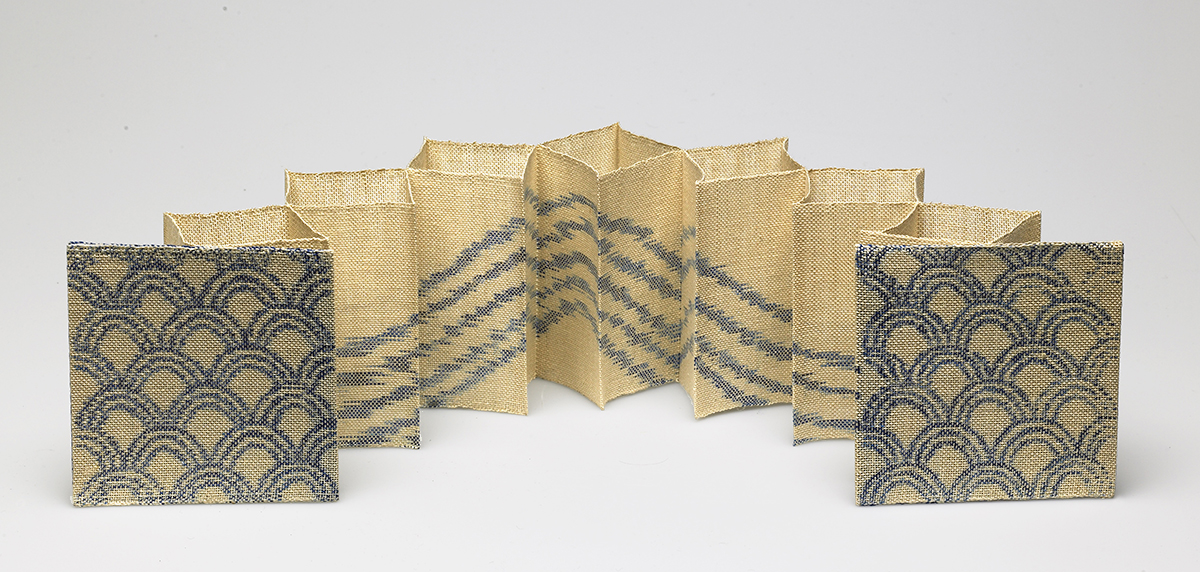
Weaver’s Work Attracts Rapt Attention
 |
It takes a bit of work to attend an art exhibit in the waning days of the Covid pandemic, with shortened hours, limits on attendance, and reservations required. Maybe that’s why, three days into its run, ‘Kay Sekimachi: Geometries,’ at the Berkeley Art Museum, attracted the avid fans that it did.
There, people, most of them women, who stood in place patiently before each piece, taking in each detail, peering in for close ups, pulling out phones to photograph details (the way nylon filaments fall through the air, their tassel ends falling like a wild woman’s hair, other threads entangled with beads).
Sekimachi, who was born in 1926 and, at 94, still weaves in her Berkeley studio, is most often discussed as a pioneer in the theory and technology of weaving. What materials can be used? She brought in nylon monofilament, and later created bowls out of leaves.
 |
What should textiles do? Play a functional role? Hang on a wall?
Sekimachi created a series of evocative hanging weavings including the Marugawa ('round river') series, whose forms can suggest voluptuous figures or sea creatures; some have a sense of menace.
“Even within the parameters of the fiber arts movement,” the museum says, “Sekimachi’s experiments with three-dimensional form often stood apart from the work of her contemporaries, whose emphasis on coarse material texture contrasted with the ethereal weightlessness of her signature monofilament sculptures.”
The exhibit was curated by Jenelle Porter. Some of the work is owned by the museum. (Other museums that own Sekimachi’s work include the Fine Arts Museums in San Francisco and the Metropolitan in New York.)
 |
Much is owned by famed collector Forrest L. Merrill, a close friend of the artist who has said of the objects he collects and the craftspeople behind them:
“These things are really nice, but the real treasures are the people who made them.”
For most of her career Sekimachi shared her home with husband Bob Stocksdale, a wood turner who created magnificent wooden bowls and other objects. He passed away in 2003.
There is a playfulness in Sekimachi’s work that reminds one of the work of another Bay Area artist, Ruth Asawa, like Sekimachi a Japanese artist, and also born in 1926. Working with wire, Asawa created three-dimensional aerial drawings that hung in space – though they have an entirely different feeling than Sekimachi’s, which blend fragility and strength.
 |
Sekimachi, a second-generation Japanese-American, grew up in a poor family in Berkeley and was interned with her family during World War II. A self-confessed poor student at Berkeley public school, she has said, “I always loved to draw and paint, but maybe that was the only thing I liked to do.”
She began making art as a youth, and recounted in a documentary, ‘Craft in America, Visionaries,’ “we were wearing rags but my paper dolls were wearing designer clothes.”
After World War II, Sekimachi studied at the esteemed California College of Arts and Crafts in Oakland; and with the now-legendary Jack Lenor Larsen, the textile creator, and with Trude Guermonprez, the Bauhaus trained weaver, at the artist-run school at Frog Pond in Guerneville.
There, Guermonprez “just really opened my eyes to what weaving could be,” Sekimachi told an oral historian for the Archives of American Art in 2001.
 |
“And so I began to weave tapestries like the one I showed you, which is just a very small series, but I certainly did them. And then, wall hangings and room dividers, and then she had taught us about double weaves. And then, from double weaving, I realized that you could weave more layers. And so by experimenting with multiple layers, I came upon the pieces that eventually became my monofilament hangings. And so they were absolutely just decorative pieces; I mean, there's nothing functional about them.”
The ‘Geometries’ exhibit shows several other series of Sekimachi’s works, including origami-like Washi vessels of Japanese paper, lovely ‘Nesting Boxes’ made of subtly colored linen, and appealing Ikat boxes woven of linen. A handmade linen book folds out to show images of Mount Fuji.
A decade ago Sekimachi moved towards minimalism with a series of small, framed images of woven linen, ink, and paint that are homages to minimalist painter Agnes Martin and to the Swiss artist Paul Klee, known for his abstracted, evocative imagery.
At one point in the oral history, Sekimachi is asked whether she is part of a national or international trend in fiber art.
“I really don’t think I think about things like this,” the artist responded. “I just do things that I want to do, and that’s it, and I don't think they’re international or American.”
- ‹ previous
- 622 of 677
- next ›



